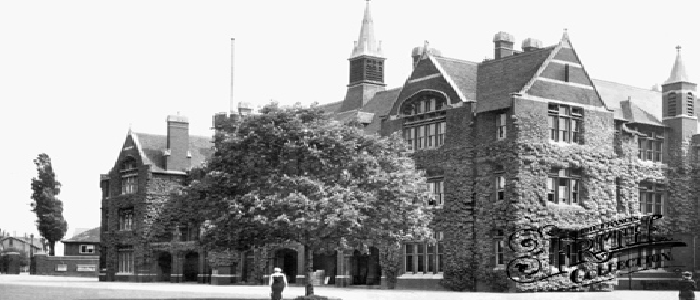Monday 28 January 2013
Saturday 26 January 2013
Sustainable Management in Lapland
Labels:
AS,
Best Work,
Case Study,
coldenvironments,
Sustainability
Year 12 students began a single lesson with an outline of how management of Cold Environments works. They then had the rest of the lesson to research an example and fit it into the syllabus framework. The points on Lapland by B.Thrasher and P.Ramsbotham would support an essay on this very well when used with specific locationed examples.
Further work from this class can be found on their blog.
What was the short term gain?
Further work from this class can be found on their blog.
What was the short term gain?
Money from tourists coming to the area and the option to create more infrastructures to be able to sustain more and more tourists each year
What management strategy is being used?
Tourism in Lapland is based primarily on the region's clean and unique nature. Nature has been protected more extensively in Lapland than in other parts of the country. This is an opportunity and richness for tourism provided that protected areas can be and are used for tourism in a sustainable way.
They have started controlling the way in which the tourists interact with the land and the local communities and their objectives have been outlines below:
· to ensure that the water supply systems of the main tourist resorts in Lapland meet modern requirements by 2007 (This means that there is less water waste)
· to complete the environmental restoration projects at the tourist resorts by 2007 (To update everything to the most efficient economically and also to use less fuel)
· to continue to use employment schemes (160 person-years) extensively to carry out work promoting tourism and improving the natural environments
· to promote the use of protected areas in tourism
· to encourage the sustainable development of resorts
How does it meet socio economic needs?
A lot of money is still being generated by the ever increasing amount of tourists coming to Lapland to come and see 'Father Christmas' This creates jobs for people in the local communities surrounding areas, e.g. working in a hotel or pretending to be Father Christmas. The money also increases the life style and standard of living for the people affected as a lot more money is being injected into the economy from outside tourists.
How does it meet environmental needs?
All of the dedicated tourist areas have been carefully set up as to make sure that each of them have the most up to date machinery, for example fuel efficient vehicles. Also other aspects have been taken into consideration for example noise pollution and light pollution, where bans have been put in place to make sure that tourists treat the area with care and respect. Here is a quote from a tourist website:
"Mother Nature is our main partner in production and we do all in our power to take good care of her. At this moment over 50% of our snowmobile fleet is equipped with 4-stroke engines which are more environmental friendly than the 2-stroke"
Monday 21 January 2013
Alaska Blackfish
Labels:
adaptations,
AS,
coldenvironments
Task one in the year 12 blog competition was to write about an animal or plant adapted for life in a cold environment. The post with the most views was the one below:. To see further studies of animal and plant adaptations visit the 12D blog.
The Alaska Blackfish:Dallia pectoralis
Once thought to be an herbivore, its primary diet is midges and mosquito insect larvae. Alaska blackfish are found in swamps, ponds, lakes, and streams with vegetation for cover, in tundra and forested locations not far inland. Their range includes Alaska and the Bering Seaislands.
Most living things are made up of 70% water. When water freezes, it expands and forms ice crystals. Repeated freezing and thawing can destroy living tissue.
The Alaska blackfish overcomes this problem by producing chemicals within its body that lowers the freezing temperature of cell fluids. Much like the antifreeze we add to the water in our vehicles, the "antifreeze" of the Alaska blackfish prevents the formation of large ice crystals within its cells, even at low temperatures.
The Alaska blackfish can survive temperatures of-20 degrees C (4 F) and the complete freezing of some body parts, including their heads, for up to several days
By P.Ramsbotham
Solving Global Water Problems
Labels:
Bangladesh,
Best Work,
Case Study,
Development,
GCSE,
Water
Year 10 pupils were set a task to research global water supply issues and attempt to solve them. Two excellent offerings are below:
Thursday 17 January 2013
2 amazing coastal landforms
The description below and pictures were researched at the start of our current year 9 course. Could you name them or mention some of the types of erosion involved?
One of the most interesting things about coasts is what the sea sculpts out of the rock. When you get cliffs where the sea is, then that is where the sea does its work. There have been pictures where the sea has sculpted something out of the cliff and it creates an amazing picture! An example of this is the pictures at the bottom. Somehow in the picture on the left the ground is sort of floating because all of the rock under it has been eroded by the water and it creates an amazing sight when you see rock floating. In the picture on the right it shows how hard that piece of rock is because it’s the last bit of rock around. This is because all the rest has been eroded which shows that all the rest were softer than that rock.
One of the most interesting things about coasts is what the sea sculpts out of the rock. When you get cliffs where the sea is, then that is where the sea does its work. There have been pictures where the sea has sculpted something out of the cliff and it creates an amazing picture! An example of this is the pictures at the bottom. Somehow in the picture on the left the ground is sort of floating because all of the rock under it has been eroded by the water and it creates an amazing sight when you see rock floating. In the picture on the right it shows how hard that piece of rock is because it’s the last bit of rock around. This is because all the rest has been eroded which shows that all the rest were softer than that rock.
T Hammond, yr 9
Wave causes and types
The work below is an excellent effort from the start of our current year 9 work:
We use the coast for many things and also we go there for the pleasure of it all. We use it for energy e.g: big wind farms as it gets very windy at the coast and other reusable energy and also solar panels (for the sunnier places in the world). The subject I will be talking about today is a particular feature at the coast that people look at for pleasure and that is waves. Waves can hypnotise people for hours on end just watching the beauty of the waves breaking, crashing and the sounds they make and of course the surfing side of it. There is so much to talk about with waves and the details which I shall go into now.
We use the coast for many things and also we go there for the pleasure of it all. We use it for energy e.g: big wind farms as it gets very windy at the coast and other reusable energy and also solar panels (for the sunnier places in the world). The subject I will be talking about today is a particular feature at the coast that people look at for pleasure and that is waves. Waves can hypnotise people for hours on end just watching the beauty of the waves breaking, crashing and the sounds they make and of course the surfing side of it. There is so much to talk about with waves and the details which I shall go into now.
Waves
Waves are
created by friction of the wind when it’s blowing over the surface of the water
usually far out sea. The wave gets pushed into the direction of the wind
creating a swell which then creates the actual wave. The wave picks up so much energy
from the wind and the friction it causes that it’s at high speed out at sea until
it hits land or it just loses its energy because the wind might stop. A wave is
affected mostly by the strength of the wind and the longer it blows for. When
the wave starts getting close to land, the more shallow it gets, the wave
starts to slow down and the wave starts to curl like an arc (that’s the perfect
time for someone to catch a wave with a surfboard). There is so much more to
see under a wave than above as there’s a whole cycle. The whole wave is rotating
forwards like a spinning cylinder very fast. An ordinary wave is called a
constructive wave which is when it deposits sand and other materials to make
more land. Another kind of wave that can be caused is a destructive wave which
is caused by more powerful winds like storms out at sea. This means more friction is
caused by a more powerful wind meaning that the waves will be rougher. When the
wave hits land, it can be very tall and has a short wave length unlike constructive waves which have a long wave length. Destructive waves also have a very strong back
wash which erodes the beach. Some waves can get extremely big. The biggest wave
ever recorded was 1740ft
As you can
see the wave activity underneath.
By C Webber, yr 9
Monday 14 January 2013
US Met Office admits that the worlds climate is shifting
Labels:
ClimateChange
A very interesting article from 'The Day' website on recent climatic events and their link to Climate Change.
Sunday 13 January 2013
What's Causing UK Cold Weather?
Labels:
A Level,
Climatic Hazards,
storify
The Storify below links to some sites with information about what to expect in the next few days and what is causing the change in the weather:
Thursday 10 January 2013
Geography department trip to Iceland 2013
Labels:
Iceland
Fancy joining the Geography department for a trip to Iceland in October 2013, any interested 5th form or L6th/IB1 students should download the letter from the portal and return to T Rees (D9) ASAP.
https://portal.bedfordschool.org.uk/api/news/?id=204
https://portal.bedfordschool.org.uk/api/news/?id=204
Saturday 5 January 2013
Arctic Oil Rig Grounded
Labels:
AS,
Case Study,
coldenvironments,
Energy,
IB,
storify
The grounding of the Kulluk rig in the Arctic sea has been in the news this week. For a summary particularly relevant to L6th Geoggers see below:
Video Map of USA Severe Weather Warnings
Labels:
A Level,
ClimateChange,
Climatic Hazards,
Tornado,
Video
This excellent video from the NOAA shows severe weather (blue) and tornado (red) warnings from last year. Its amazing how much of the USA is affected.
A level geographers in particular should note the location and pattern of tornado warnings.
Wednesday 2 January 2013
Kyoto Protocol: Excellent Intro
Labels:
Case Study,
ClimateChange,
Climatic Hazards,
Energy,
GCSE,
Video
The video below from Canada's CBC network gives an excellent introduction to the Kyoto protocol and how Canada and other countries have followed it up. The article it is taken from is a must read to add facts and figures to the picture presented by the video.
Subscribe to:
Posts (Atom)

















